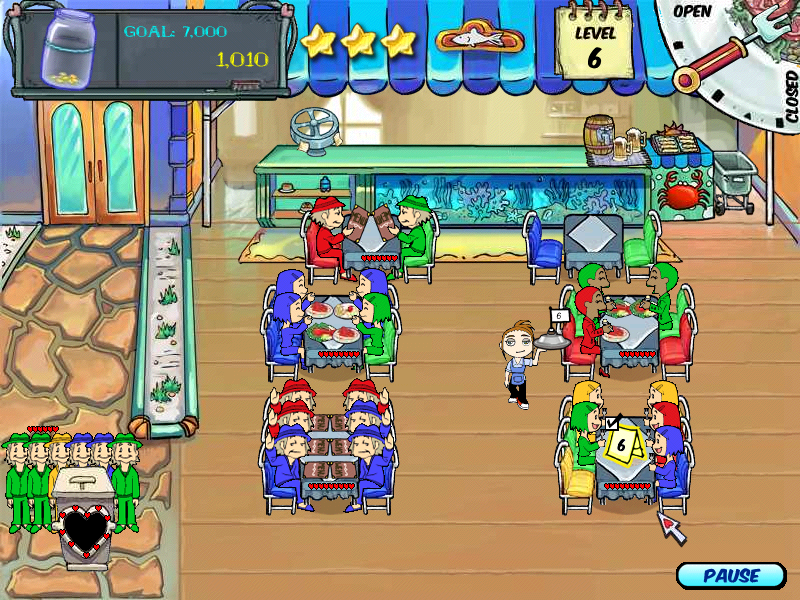Game-based learning doesn’t have to break the bank. That was the key point of my presentation at The Learning Assembly in Melbourne last week.
Sure, you can spend an obscene amount of money on gaming technology if you want to, but you don’t have to.
Take Diner Dash for instance. In this free online game, you play the role of a waitress in a busy restaurant. As the customers arrive you need to seat them, take their order, submit the order to the chef, serve their food, transact their payment, clean their table, and take the dirty dishes back to the kitchen.
Leave any of your customers unattended for too long and they’ll walk out in a huff, costing you a star. When you lose all your stars, your shift is over.
It’s all very straight-forward… until the customers start pouring in and you find yourself racing to do everything at the same time. Straight-forward rapidly becomes complex!
While Diner Dash is just a simple little game, it can afford an engaging learning experience.
For example, suppose you incorporate the game into a team-building workshop. You could split the participants into teams of 3 or 4 members, place each team in front of a computer with Diner Dash pre-loaded, and instruct them to score as many points as possible within a given time period.
Of course the game isn’t meant to be played in this way. Controlling the waitress by committee is awkward and inefficient. The participants will panic; they’ll snap at one another; someone will commandeer the mouse and go it alone; someone else will butt in; and they’ll all start to talk over the top of each other.
But that’s by design. Because when the game is over, you introduce Tuckman’s model of team development and suddenly the penny drops.
What Diner Dash has done is provide the participants with a recent experience of team building. Sure, the premise of the game was fictitious, but the dynamics among the players were real. So when it comes time to reflect upon the theoretical principles of the model, they don’t need to imagine some vague hypothetical scenario because they’ve personally experienced a highly charged scenario that very morning. It’s fresh in their minds.

Other themes that could emerge via a game like Diner Dash include time management, priority management, customer service, problem solving, decision making, strategic thinking, adaptability and learning agility.
Another is collaboration. If you were to put a leaderboard at the front of the room, I could almost guarantee that each team would default to competition mode and battle it out for supremacy. But wasn’t the objective of the activity to score as many points as possible? So why wouldn’t you collaborate with your colleagues around you to do that – especially those who had played the game before! This observation never fails to enlighten.
So, getting back to my original proposition: game-based learning doesn’t have to break the bank. With resources such as Diner Dash available for free, you can do it on a shoestring.






